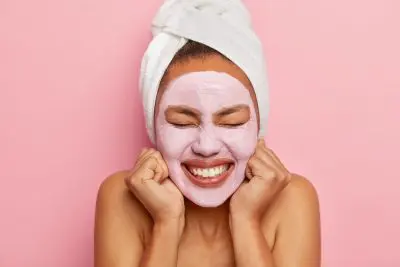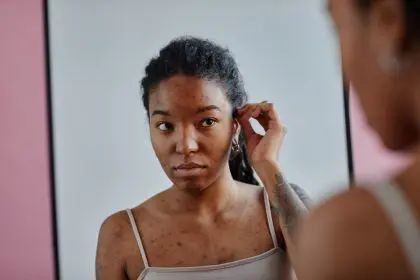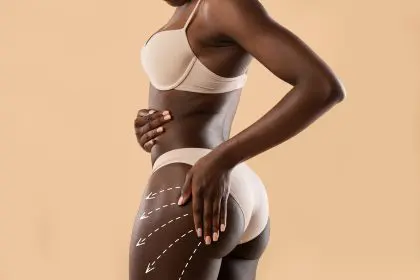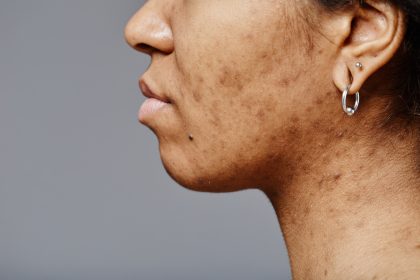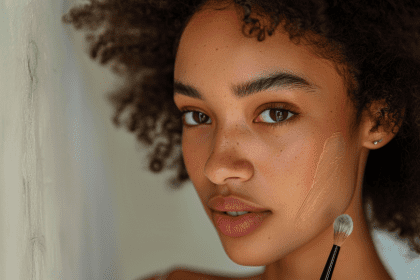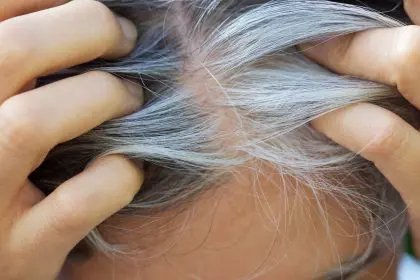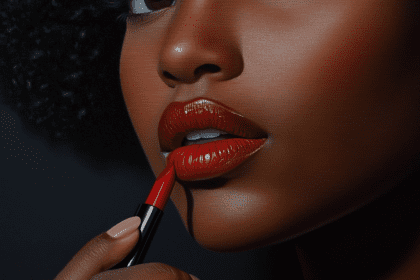The mirror doesn’t lie, and neither does that persistent pimple that’s been camping out on your chin for what feels like forever. Despite investing in countless cleansers, serums, and treatments, your skin seems determined to stay in rebellion mode. If you’re wondering why your acne won’t budge, you’re definitely not alone in this frustrating battle.
Millions of people struggle with stubborn acne that refuses to respond to traditional treatments. While it’s easy to blame genetics or bad luck, the reality is often more complex. Understanding the root causes behind persistent breakouts can be the key to finally achieving the clear skin you’ve been dreaming about.
1. Your hormones are running the show
Hormonal fluctuations remain one of the most powerful forces behind stubborn acne, particularly in adults who thought they’d left teenage breakouts behind. These internal chemical messengers can trigger oil production and inflammation in ways that surface-level treatments simply can’t address.
For women, monthly cycles create predictable patterns of breakouts, typically appearing along the jawline and chin area one to two weeks before menstruation. The rise and fall of estrogen and progesterone levels directly impact sebaceous gland activity, leading to increased oil production and clogged pores.
Men aren’t immune to hormonal acne either. Testosterone levels naturally fluctuate throughout the day and can be influenced by stress, diet, and lifestyle factors. Higher testosterone levels stimulate the sebaceous glands to produce more sebum, creating the perfect environment for acne-causing bacteria to thrive.
Thyroid imbalances also play a significant role in skin health. An underactive or overactive thyroid can disrupt the skin’s natural renewal process, leading to persistent breakouts that don’t respond well to topical treatments.
2. Your skincare routine is actually making things worse
The road to clear skin is paved with good intentions, but sometimes those intentions backfire spectacularly. Over-cleansing, over-exfoliating, and using too many active ingredients can actually perpetuate the acne cycle by damaging the skin barrier and triggering more inflammation.
Many people fall into the trap of thinking that harsher equals better when it comes to acne treatment. Scrubbing the face multiple times daily, using high concentrations of active ingredients, or combining incompatible products can strip the skin of its natural protective oils. When this happens, the skin overcompensates by producing even more oil, leading to more breakouts.
The phenomenon known as “purging” can also confuse the skincare journey. When introducing new active ingredients like retinoids or chemical exfoliants, the skin may initially break out more as it accelerates cell turnover and brings underlying clogs to the surface. This temporary worsening can last several weeks and often causes people to abandon effective treatments prematurely.
Product layering without proper knowledge can create a cocktail of interactions that irritate the skin. Mixing certain acids, using retinoids with benzoyl peroxide at the same time, or applying too many products can overwhelm the skin and maintain a constant state of irritation.
3. Hidden dietary triggers are fueling inflammation
The connection between diet and acne has gained significant recognition in recent years, with certain foods consistently linked to increased breakout activity. While individual responses vary, several dietary patterns can contribute to persistent acne through various mechanisms.
High-glycemic foods that cause rapid spikes in blood sugar levels can trigger hormonal cascades that increase oil production and inflammation. These foods include refined sugars, white bread, pasta, and processed snacks that have become staples in many modern diets.
Dairy products, particularly milk, contain natural hormones and bioactive molecules that can influence human hormonal pathways. Some people find that reducing or eliminating dairy leads to significant improvements in their skin clarity, though the response isn’t universal.
Omega-6 fatty acids, found in high concentrations in processed foods and certain vegetable oils, can promote inflammation when consumed in excess relative to omega-3 fatty acids. The typical Western diet tends to be heavily skewed toward omega-6 fats, potentially creating a pro-inflammatory environment that supports acne development.
Food sensitivities and intolerances can also manifest as skin problems. Common culprits include gluten, soy, nuts, and shellfish, though any food can potentially trigger inflammatory responses in sensitive individuals.
4. Stress is sabotaging your skin from within
The mind-skin connection runs deeper than many people realize, with psychological stress directly impacting skin health through multiple biological pathways. Chronic stress doesn’t just make you feel bad—it actively promotes acne formation and prevents healing.
When stressed, the body releases cortisol and other stress hormones that increase oil production and inflammation throughout the body, including the skin. This hormonal response evolved to help humans deal with immediate physical threats, but modern chronic stress keeps these systems activated continuously.
Stress also impairs the skin’s barrier function and slows down the healing process, meaning that existing breakouts take longer to resolve and are more likely to leave marks or scars. The immune system becomes less effective at fighting acne-causing bacteria when under chronic stress.
Sleep deprivation, often linked to stress, further compounds these problems. During sleep, the skin undergoes repair and regeneration processes. When sleep is inadequate or poor quality, these healing mechanisms don’t function optimally, leaving the skin more vulnerable to breakouts and slower to recover.
The behavioral aspects of stress can also contribute to acne. Stress-eating, face-touching, and neglecting skincare routines all become more common during stressful periods, creating additional pathways for acne to persist.
5. Environmental factors are constantly attacking your skin
The world around us presents numerous challenges to skin health, many of which go unnoticed in daily life. Environmental factors can contribute to persistent acne by introducing irritants, clogging pores, and promoting inflammation.
Air pollution exposes the skin to particulate matter, chemicals, and free radicals that can penetrate pores and trigger inflammatory responses. Urban environments with higher pollution levels often correlate with increased acne rates, particularly along the T-zone where oil production is highest.
Climate and humidity levels significantly impact skin behavior. High humidity can increase oil production and bacterial growth, while very dry conditions can cause the skin to overcompensate with increased sebum production. Sudden climate changes, such as traveling or seasonal transitions, can disrupt the skin’s equilibrium.
Hard water with high mineral content can leave deposits on the skin that clog pores and interfere with product absorption. The minerals in hard water can also disrupt the skin’s natural pH balance, making it more susceptible to bacterial overgrowth.
Workplace environments present unique challenges, from recycled air in office buildings to specific occupational exposures. Kitchen workers face oil and heat exposure, while those in dusty or chemical-rich environments may find these particles contributing to clogged pores.
6. Your makeup and hair products are secret saboteurs
The products we use to enhance our appearance can sometimes work against our skin health goals. Many cosmetic and hair care products contain ingredients that promote acne formation, particularly when used consistently over time.
Comedogenic ingredients in makeup and skincare products can clog pores even in people who aren’t typically acne-prone. Common culprits include certain oils, waxes, and silicones that create occlusive barriers on the skin surface. Even products labeled as “non-comedogenic” can cause problems for some individuals.
Hair products pose a particular challenge because they often contain heavy oils, silicones, and styling agents that can migrate onto facial skin, especially around the hairline and temples. Sleeping with hair products can transfer these ingredients to pillowcases, creating ongoing exposure.
Makeup brushes and applicators can harbor bacteria and old product residues that reintroduce contaminants to the skin with each use. Sharing makeup tools or using expired products increases the risk of bacterial contamination and subsequent breakouts.
The practice of not removing makeup thoroughly before bed allows comedogenic ingredients and environmental pollutants to remain on the skin for extended periods, increasing the likelihood of pore blockages and inflammation.
7. Underlying health conditions are the hidden culprit
Sometimes persistent acne is actually a symptom of underlying health conditions that require medical attention rather than just topical treatments. These conditions can maintain chronic inflammation and hormonal imbalances that keep acne active regardless of skincare efforts.
Polycystic ovary syndrome (PCOS) affects hormonal balance in ways that directly promote acne formation. Women with PCOS often experience persistent breakouts along the jawline and chin due to elevated androgen levels. The condition also affects insulin sensitivity, which can further complicate acne management.
Insulin resistance and metabolic disorders can contribute to acne through multiple mechanisms. High insulin levels can stimulate oil production and inflammation while also affecting other hormonal pathways that influence skin health.
Digestive issues and gut health imbalances may manifest as skin problems through the gut-skin axis. An unhealthy gut microbiome can contribute to systemic inflammation and affect nutrient absorption, both of which impact skin health.
Certain medications can cause or worsen acne as a side effect. Corticosteroids, lithium, certain antidepressants, and some vitamins in high doses can all contribute to breakout activity. Even switching between different formulations of the same medication can sometimes trigger skin changes.
Taking control of stubborn acne
Understanding these 7 factors provides a roadmap for addressing persistent acne more effectively. Rather than focusing solely on topical treatments, a comprehensive approach that considers hormonal health, lifestyle factors, and potential underlying conditions often yields better results.
The journey to clear skin rarely follows a straight path, and what works for one person may not work for another. However, by identifying and addressing the specific factors contributing to your individual acne pattern, you can develop a more targeted and effective strategy for achieving the clear, healthy skin you deserve.


